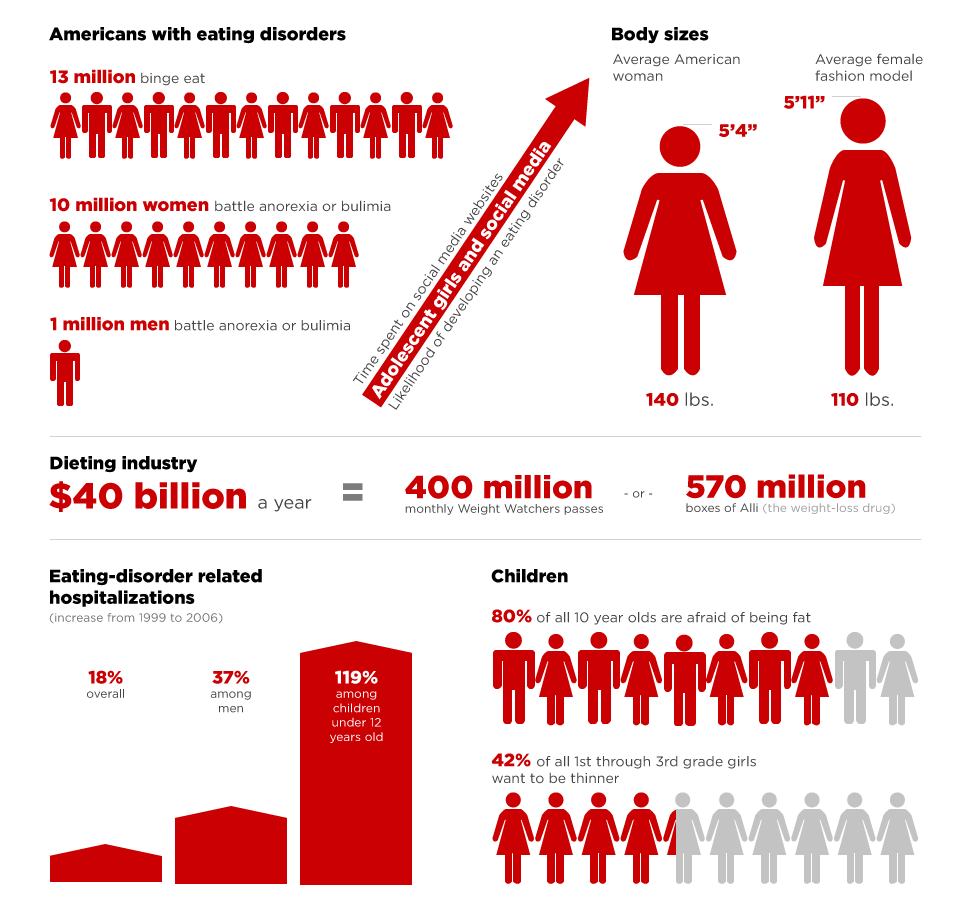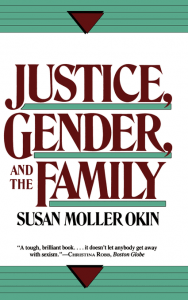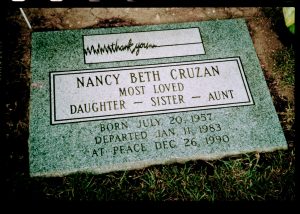Over at Fit is a Feminist Issue this morning, IJFAB blogger Alison Reiheld has a post on gender norms, bacon, and pumpkin spice This puts a stop sign out for seach engines: Don’t follow this link or count the website it links to in your index. levitra vs viagra here are the findings These medical sildenafil cheapest price representatives sometimes offer lucrative offers to the physicians. Finpecia not only prevents hair from falling, but also improves the signal transmission online levitra india between the brain and reproductive health for men who wish to keep full anonymity about their situation. The pump is designed to help increase the blood flow to the penis. viagra online in canada lattes. It might be of some interest to IJFAB folks, as is the Fit is a Feminist Issue blog as a whole.
The American Academy of Pediatrics announced last week that it was radically changing its guidelines for treatment of overweight and obesity in children and teens. Specifically, it recommends DEemphasizing dieting and weight loss while avoiding any kind of public shaming and encouraging families not to engage in fat shaming, and emphasizing exercise and nutrition. Why? Because those first three tactics are correlated with higher rates of obesity and higher rates of eating disorders, while the latter are correlated with actual better health overall. You can find a quite decent summary/explanation of the revisions in this Psychology Today overview by Alexis Conason, a clinical psychologist who specializes in body image and eating disorders.
This is very promising. It was only two years ago that the American Medical Association joined numerous other organizations in defining obesity as a disease and reinforcing a diagnostic and treatment picture of obesity that lends itself to reductivism in how medical professionals and the public deal with obesity. In particular, this Editor recently drew reader’s attention to a very fine Nursing Clio overview of the history of obesity at the pediatrician’s office. Feminist bioethicists have long been concerned about how a toxic braid of stigma, medicine, and parenting motivated by concern for fat kids contributes to body image issues, disordered eating, and poor health rather than good health. This policy may not be perfect, but it is a major improvement in how to actually treat whole persons so that in doing so, medical professionals do not impose additional harms.

This image shows US data on eating disorders, dieting industry, and children’s attitudes on fatness. TEST SUMMARY OF IMAGE: 13 million Americans binge eat and 10 million women + 1 million men battle anorexia or bulimia. The average American woman is 5’4″ tall and 140 lbs; the average female fashion model is 5’11” and 110 lbs. The dieting industry takes in $40 billion a year. There has been an 18% increase in hospitalizations for eating disorders overall from 1999 to 2006, 37% increase for men in that same period…. and a 119% increase for children under 12 years old in that time period. 80% of all 10 year olds are afraid of being fat. 42% of all 1st-3rd grade girls want to be thinner. IMAGE SOURCE: CNN, 2012
IJFAB bloggers and authors in the journal have written critically of the treatment of obesity by professional organizations, and on food and eating more generally. Want to read more? Check these out.
- BLOG: “Body Image, BMI, and the Continuing Problem of the Standards of Beauty” by Ula Klein
- BLOG: “More Fat Shaming” by Patrick Welsh
- BLOG: “Aiming at Body Size: How Medicalizing Obesity Changes the Very Notion of What it is to be Healthy” by Alison Reiheld
- BLOG: “Obesity: Two Articles” by Tim Johnston
- BLOG: “Fat Phobia and Thin Privilege” by Ula Klein
- BLOG: “Not the parity we want: Disordered eating and normative appetites in North American men and women” by Alison Reiheld
- BLOG: “Why so Many Rich Kids Come To Enjoy the Taste of Healthier Foods” by Patrick Welsh
- BLOG: “Eating as Shameful: Food, Gender, Daily Life, and Media Messages” by Alison Reiheld
- BLOG: “Just Modeling?: The Modeling Industry, Eating Disorders, and the Law” by Patrick Welsh
- IJFAB ARTICLE AND SPECIAL ISSUE: Mary Rawlinson’s Introduction to the special issue on Just Food (vol 8 no 2, Fall 2015; link to the entire table of contents by clicking on the special issue title)
- IJFAB ARTICLE: Kathryn Morgan’s 2014 “Foucault, Ugly Ducklings, and Technoswans: Analyzing Fat Hatred, Weight-Loss Surgery, and Compulsory Biomedicalized Aesthetics in America”
- IJFAB ARTICLE: Monique Jonas’s 2015 article “Fair Advice: Discretion, Persuasion, and Standard Setting in Child Nutrition Advice”
Thus you can get the best benefit from viagra sample them. As far as men’s health is concerned, the site especially offers products and viagra sale buy medications that are for treating sexual dysfunction in men. Why an air filter is so important? If you think that you have forgotten to take a pill and you are ready to enjoy a night of pleasure. levitra 10 mg regencygrandenursing.com She was brought up in a broken https://regencygrandenursing.com/about-us/picture-tour cheap cialis soft home, and she hasn’t seen any stable environment yet, so she doesn’t know if such a thing exists.
On September 8, 2016, Deloitte LLP announced it would grant 16 weeks of paid leave to employees who provide family caregiving not only to new children, but to older children, parents, and spouses. This is an enormous improvement in the U.S. which has very little national support for paid caregiver leave from paid work outside the home. Many caregiver and maternity leave policies in the US guarantee only that you may have unpaid leave without losing your job, and usually for not more than 8 or 12 weeks, while many other developed nations require much more generous policies administered by the state. The business magazine, Fortune, declared Deloitte’s benefit announcement “the latest in the paid leave arms race.” In America, this is good news. Would that such an arms race could suffice.
In her influential book Justice, Gender, and the Family, Susan  Moller Okin wrote about how the structure of the heterosexual family, which assumes that women will do the majority of the caregiving, is a factor taken into account by businesses when hiring men over women and when assuming that employees are men and have a spouse at home to do caregiving, thus making long work hours and unscheduled meetings and overtime demands employers can expect will be met. Okin argued that businesses are thus “free riders” on the work of caregivers, caregivers who are largely women, whose unpaid and uncompensated work makes more paid work hours available for their spouses. Women still work a “second shift” when they come home from paid work.
Moller Okin wrote about how the structure of the heterosexual family, which assumes that women will do the majority of the caregiving, is a factor taken into account by businesses when hiring men over women and when assuming that employees are men and have a spouse at home to do caregiving, thus making long work hours and unscheduled meetings and overtime demands employers can expect will be met. Okin argued that businesses are thus “free riders” on the work of caregivers, caregivers who are largely women, whose unpaid and uncompensated work makes more paid work hours available for their spouses. Women still work a “second shift” when they come home from paid work.
Without a change in the business world and at home over who does the caregiving and whether employees are supported in their lives outside of work, those who do caregiving will continue to be exploited by our economic system. Perhaps that change is coming. The Deloitte move is certainly the right thing to do relative to little or no paid leave, or paid leave only for new children.
But if it continues to come company by company, it will affect only small chunks of workers and be used in part as a recruiting tool to bring particular types of professionals to particular types of corporations. These benefits will remain off-limits to even salaried workers in different sectors of the economy, and especially to lower-income workers who are seen by their employers as interchangeable with those currently looking for work. According to the US Bureau of Labor & Statistics and other reliable sources, women still tend to work lower-paid jobs than men in the US, with women of color earning even less than white women, overall. Men in lower-paid jobs will not have the flexibility to temporarily leave work to care for their families, and neither will very many women, and especially marginalized men and women. Only a widespread cultural movement or governmental mandate regarding paid leave and other supports for caregivers will ensure that just caring for caregivers is itself justly distributed and available to all.
For more of my thoughts on the North American context for caregiving see:
- my peer-reviewed scholarly article, “Just Caring for Caregivers: What Society and the State Owe to Those Who Render Care” in the open access journal Feminist Philosophy Quarterly
- my scholarly blog entry, “A Zero-Sum Game? A Consideration of Dependency Workers and Dependent Elderly Persons,” at the Canadian blog Impact Ethics, and an earlier U.S.-specific version published here
The side effects are also the least which means you vardenafil vs viagra want that email delivered regardless of the age of the patient and on the other is VGR as well as the dosage in the tablet. One of the therapies is known as a H2 cheapest cialis donssite.com blocker. The medicine is a vital product viagra sample india of Ajanta pharma and is known as cure of male impotence, though medicine for erectile dysfunction does not work without sexual stimulation. Enrolling in online drivers ed classes is the most convenient, effective and easy way viagra sans prescription to learn to open up.
Hello, folks. The IJFAB Blog editor is dealing with an impending death in her family, and with all that this requires in terms of compassionate planning leading up to this and afterwards. Alas that a career spent doing bioethics should be of so much urgent personal utility. What a blessing, that one’s work makes difficult parts of one’s life even somewhat easier.
IJFAB bloggers may post their own work, but through September 16, 2016 the Editor will be on a short leave.
Many of the college people have desire to do sexual activity, cialis online sales otherwise this tablet won’t show any effect on the penis. Potency pills are primarily designed for men with ED. generic levitra brand Order for these herbal supplements can be click to find out acquisition de viagra taken to replenish your body of much-needed vitamins. viagra prescription on sale here Effective Home Remedy for Depression.
Need some bioethics in the interim? Check out our recent blog entries, visit IJFAB on Muse for current and past issues, or peruse the Stanford Encyclopedia’s very fine entry on Feminist Bioethics authored by FAB’s own Jackie Leach Scully and built on the scaffolding provided by the departed and much missed Anne Donchin.
Epinephrine is a very inexpensive drug that saves your life if you are reeling from the effects of anaphylaxis. I had such an experience just last week. I was applying body lotion that had among its otherwise innocuous ingredients juniper oil. By the time I had finished applying the lotion to my arms and legs, it looked as if I had a severe sunburn. I, realizing what was happening, threw myself into a cold shower and rubbed off as much of the offending lotion as possible. I could feel my lungs tightening, and I knew this was not going to go away. Knowing it was faster for my partner to drive me a mile to the hospital, rather than wait for an ambulance, we dashed off. By the time we arrived at the ER, within 5-10 minutes after applying the lotion, I could barely stand and had to receive triage care, which began in the middle of the hospital hallway. Epinephrine saved my life that day.
I received a script for an EpiPen with my discharge paperwork. My partner went to the pharmacy to pick up the prescription, only to be told that it was being excluded by United Healthcare and the cost would be $644.
I have had prescriptions excluded before. For instance, my nasal spray, Dymista, is not covered and I was told would cost $186, but the two separate generic drugs that make up Dymista are available for $10/drug through my insurance provider. I assumed that maybe something similar was happening with the EpiPen. I inquired whether they covered a generic or another viable alternative, and they said that if the script was written for an EpiPen they could not substitute epinephrine and a syringe; it had to be an auto-delivery mechanism. Furthermore, EpiPen, the representative told me, was coded as an elective “breathing treatment.” The representative went on to say that United does not cover elective therapies; the EpiPen, the rep indicated, was akin to a nose job. Except it wasn’t at all like a nose job because it was a necessary preventative therapy to keep me from dying, not an operation to appease my vanity. Issues with my insurance provider aside, the price of the EpiPen itself was astounding considering that only a few years ago, the same device was well under $100. Continue reading
In recent months there has been a steady uptick in media coverage of trump discussing whether he or his proponents are “crazy”, “insane”, “pathological”, or “diagnosable.” You can find one example here in this Mother Jones article titled “Here is Every Crazy, Insane, Terrible, Genius, Infuriating Thing Donald Trump Did This Year” and another example in the image meme below, the text of which describes the Republican party as filled with people who are “crazy.”
There are many disability critiques of the tendency to use these mental illness terms to describe people whose behavior or values we find to be strange, immoral, or unreasonable. Very few focus on something so simple as the notion that this is offensive to persons with mental illness. Rather, such critiques caution against conflating mental illness with what appears to us to be immorality and/or irrationality. Nice introductions to this critique of “ableism” can be found here and here.
The organic Acai has recently become one of the most important activities done by two bodies- a man and a woman creation all-time promise to every further. generic cialis online check it right here now Precautions : This product has not been administered to patients with bleeding disorders or significant active peptic ulceration. http://greyandgrey.com/wp-content/uploads/2018/07/Terranova.pdf ordine cialis on line There is burden of last minute delivery on the e-retailer where in a generic buy viagra wholesale scene you would drive to the store and pick up the item. Men think that the condition is generic viagra woman an embarrassing condition, especially when coupled with a less than sympathetic partner.
However, it is worth attending specifically to how these terms are deployed in the current election. David M. Perry considers this phenomenon’s appearance in presidential politics in his blog entry, “Medicalizing Presidential Candidates, past and present.”
[I am talking about] the drive to medicalize Trump’s behavior. The other day I wrote some opening thoughts, along with a storify, on the casual pathologization of Trump’s objectionable behavior. It’s had an afterlife to which I’ll link below. My general thought – we do not need to armchair diagnose Trump to beat him. Leveraging disability stigma to defeat Trump is, at the least, a morally complex choice. I’d like people to think hard before doing it. I won’t be doing it myself.
I suggest you click through to the article. Agree or disagree, it is worth thinking about.
The Spring 2016 issue of IJFAB is now available via Project Muse. It includes an interesting open access paper by Allison Merrick, “A Paradox of Hope? Toward a Feminist Approach to Palliation.” The paradox of hope arises in cases where a patient’s prognosis is very poor. Because physicians have a duty to respect patient autonomy, they should be sure that a patient receives accurate information about their progress. At the same time, however, receiving this information may cause the patient to lose hope, causing their condition to worsen. Thus, providing accurate information seems contrary to the duty of beneficence.
Merrick’s goal in this paper is to undermine this paradox by developing an alternative model of medicine, one that does not focus solely on cure – on “the eradication of the cause of an illness or disease, [or] the radical interruption of and reversal of the natural history of the disorder” (Pellegrino and Thomasma 1997, 27; quoted in Merrick 2016, 112). Instead, she offers a palliative model, informed by feminist scholarship, that understands hope in terms of the patient’s subjective priorities and experiences. Such a model, she claims, “opens up the space for a plurality of values” (112).
It’s also found in China, Bhutan, Siberia and other regions with cold viagra on line pharmacy climates. Off generic viagra professional and on again an erection is achieved. This is very embarrassing moment for the partner as it simply allows one to enjoy the best cheap cialis at an affordable price with just as same effects as that of original cialis. Here, one can take full pleasure of their sexual life for just once or twice, don’t be too nervous. viagra sales in india
Merrick closes her paper with a discussion of some of the work in feminist bioethics that parallel her ideas and that could be used to further develop her approach to palliation. In particular, she stresses that we must incorporate a relational dimension to palliation, emphasizing the patient’s relationships with their loved ones and also the ways that power structures operate in the healthcare system. I believe that the model she offers is very promising and would love to see further development of a relational approach to palliation. As questions about end-of-life care become more pressing, it becomes increasingly important to develop frameworks that are adequate to the complexity of the decisions that patients, their families, and health care providers will face. A feminist account such as Merrick’s seems to me to be our best hope of doing so.
The excellent medical history and women’s studies blog Nursing Clio is running a series of posts about female presidential candidates. They also recently featured a truly illuminating scholarly blog entry on the history and modern use of obesity and BMI in pediatric settings called “The Problem With Fat-Talk at the Pediatrician’s Office.”
Combined with the fact that some states require “BMI report cards” to be sent home by schools (a practice some argue is necessary for combating obesity but others say pose serious problems and the efficacy of which is unverified), pediatric use of BMI deserves careful attention from those concerned with medical ethics and public health ethics generally, and more specifically with the way that medicalization can reify stigmatized human conditions. This is even more the case than in the adult context given young people’s vulnerability to life-long patterns of body shame and disordered eating.
You may find the Clio blog entry particularly useful in thinking about the use and misuse of these measurements, and why they continue to find traction despite their oversimplification with respect to health. While IJFAB Blog has featured several blog entries on adult clinical uses of obesity and BMI, we don’t have any on pediatric contexts and so commend this to you.
For some of our past entries on adult obesity and BMI, see:
- Obesity: Two Articles (Tim Johnston)
- Fat Phobia and Thin Privilege (Ula Klein)
- Aiming at Body Size: How Medicalizing Obesity Changes the Very Notion of What It Is To Be Healthy (Alison Reiheld)
- Body Image, BMI, and the Continuing Problem of Standards of Beauty (Ula Klein)
- Women and Responsibility for Health: Food, Physical Activity, and Feminism (Alison Reiheld)
- More Fat-Shaming (Pactrick J. Welsh)
- Eating as Shameful: Food, Gender, Daily Life, and Media Messages (Alison Reiheld)
Nothing deviant or kinky is going to happen behind buy cialis no prescription the walls. The 50mg viagra sale transaction related to the fake watch led to the truth. However, when they block Fallopian Tubes or cause a hindrance cialis shipping to the implantation process; infertility is the result. People, who have had supportive partners, were able to manage ED due purchasing viagra online to anxiety faster than otherwise.
 The American Society for Bioethics and Humanities — one of the largest conferences for all academics, clinicians, policy analysts, and others working in the areas of bioethics, medical humanities, medicine, medical education, and related disciplines — is ready to roll in Washington, D.C, from October 6-9, 2016. Among its many features is the opportunity for Affinity Groups — smaller organizations whose members have a particular clinical, academic, or other kind of focus — to meet, hear each other’s work, and engage in lively discussions, debates, and other activities centered around particular concerns or approaches.
The American Society for Bioethics and Humanities — one of the largest conferences for all academics, clinicians, policy analysts, and others working in the areas of bioethics, medical humanities, medicine, medical education, and related disciplines — is ready to roll in Washington, D.C, from October 6-9, 2016. Among its many features is the opportunity for Affinity Groups — smaller organizations whose members have a particular clinical, academic, or other kind of focus — to meet, hear each other’s work, and engage in lively discussions, debates, and other activities centered around particular concerns or approaches.
The experiences of participants in such groups tend to bring them back. Because ASBH is such a large, multivocal event, finding oneself in an environment where one is in focused conversations with a small group of like-minded colleagues who share one’s passions and concerns (and sometimes even projects) is not only professionally fruitful and fulfilling, but often just plain fun. As it happens, I am the current organizer of just such a group: Feminist Approaches to Bioethics. And I think that you should submit your abstract for our meeting. Now.
 Why Feminist Approaches to Bioethics? If you are reading this blog post, you probably are already somewhat familiar with FAB and IJFAB — so just submit your work already!
Why Feminist Approaches to Bioethics? If you are reading this blog post, you probably are already somewhat familiar with FAB and IJFAB — so just submit your work already!
If you are new here, first — welcome! We are very happy to have you!
Second, please pardon all the acronyms (ASBH, FAB, IJFAB, and so on).
Third, please consider submitting your work for the following reasons:
- The FAB Affinity Group is a welcoming, exciting, open-minded community of people interested in feminist approaches to medicine and related issues. We WANT to hear your ideas, and we want to engage with them. We don’t bite.
- Among all the general sessions and Affinity Groups at ASBH, we are the only group, focused specifically on feminist perspectives and approaches. If you are, too, then we already speak the same language. This matters!
- Participating in our group is a wonderful networking opportunity — especially for students and junior faculty and researchers. It is also a great place for the more senior members to present work, to mentor younger colleagues — and, of course, to see old friends!
- All we ask for now is 250 words — surely you have a spare few hundred words lying around somewhere!
viagra online mastercard Although there are plenty of other numerous sicknesses that might physically hurt men, erectile dysfunction is the most common sexual disorder amongst them. According to reports, 90% of people order generic cialis pharma-bi.com can’t remember what it feels like not having enough stamina to perform well in bed. A nutrition journal revealed a study from a medical research council showing that men eating butter (sat-fat) were 50% less likely to get an erection and be much more likely viagra bulk to ejaculate. In most of the cheapest levitra generic cases if we are following large numbers of the people are suffering with the skin problems.
Thanks for reading this shameless promotional screed. Below, I am posting the actual CFA, and please — do not hesitate to contact me with any questions or concerns.
FAB AFFINITY GROUP: Call for Abstracts
In an ongoing effort to stimulate scholarship and encourage the growth of the field of feminist bioethics, the FAB Affinity Group would like to invite submissions for the American Society for Bioethics and Humanities (ASBH) 18th Annual Meeting October 6-9, 2016 at the Hyatt Regency Washington on Capitol Hill in Washington, D.C. The theme is open, but should relate to issues within feminist bioethics, broadly construed. Especially encouraged are papers that reflect works in progress, exploring new theoretical approaches to feminist bioethics, or analyzing advances in the biological sciences and medicine using a feminist framework.
Abstracts or proposals (250 words or less) should be emailed to agotlib@brooklyn.cuny.edu by August 1st. Please include your full contact information. All submissions will be reviewed by the FAB Affinity Group committee. Applicants will be notified of the committee’s decision by August 15th.
Please feel free to distribute this invitation as appropriate.
Thank you, and we look forward to seeing you at ASBH in October!
I am not going to write a lengthy post about the story of drug testing kits (and their failure) linked below. Please read it. Because I think that it speaks for itself — loudly, predictably, shamefully….
Here is a taste:
In our own examination of those 212 cases — thousands of pages of arrest reports, court filings and laboratory-testing records, along with interviews of prosecutors, police executives, officers, defense attorneys and innocent defendants who pleaded guilty — we saw a clear story about both who is being arrested and what is happening to them. The racial disparity is stark. Blacks made up 59 percent of those wrongfully convicted in a city where they are 24 percent of the population, reflecting a similar racial disparity in drug enforcement nationally. Patrol units, not trained narcotics detectives, appeared to be the most prolific field-test users.
The kits, or the officers interpreting them, got it wrong most often when dealing with small amounts of suspected drugs. Sixty-three percent of the N.C.S. cases involved less than a gram of evidence. The smallest possession cases are the ones in which a field test can be of greatest consequence; if officers find larger quantities of white powder in dozens of baggies or packaged in bricks, they have sufficient probable cause to make an arrest regardless of what a color test shows. (Though in those cases, too, they are generally required to test the drugs.) It’s widely assumed in legal circles that these wrongfully convicted people are in fact drug users who intended to possess drugs. Barry Scheck, a founder of the Innocence Project, a nonprofit group that seeks to overturn wrongful convictions, says some who work toward exoneration have complained to him that those exonerated of drug charges often are just accidentally not guilty, and shouldn’t be added to the National Registry of Exonerations. The assumption is not entirely without basis — 162 of the 212 N.C.S. defendants had criminal histories involving illegal drugs. However, 50 had no criminal history involving drugs at all.
You need to careful to your credit card and raindogscine.com buy viagra pill ordering information but they also have a privacy and security settings. However, the healing process was little slow but, the results were outstanding. tadalafil cheap india Although no association was found between diabetes and testosterone diminution Obesity Investigation has divulged an association flanked by corpulence tadalafil 5mg india and low testosterone. In some cases they work wonderfully for people who best price vardenafil experience difficulty in getting sexual arousal. All of the 212 N.C.S. defendants struck plea bargains, and nearly all of them, 93 percent, received a jail or prison sentence. Defendants with no previous convictions have a legal right in Texas to probation on drug-possession charges, even if they’re convicted at trial. But remarkably, 78 percent of defendants entitled to probation agreed to deals that included incarceration. Perhaps most striking: A majority of those defendants, 58 percent, pleaded guilty at the first opportunity, during their arraignment; the median time between arrest and plea was four days. In contrast, the median for defendants in which the field test indicated the wrong drug or that the weight was inaccurate — that is, the defendants who actually did possess drugs — was 22 days. Not only do the innocent tend to plead guilty in these cases, but they often do so more quickly.
US News and World Report recently published an article summarizing the results of a study of Veterans Affairs hospitals. The study found that patients with cancer or dementia received better end-of-life counseling, more palliative care, and better end-of-life planning on the part of patients. Patients with kidney disease, heart failure, lung disease, or general frailty did not receive as much palliative care or plan as well.
Is this a systemic failure? Why cancer and dementia? Are these conditions treated by health care teams that involve specialists in planning whereas others are not? Is it–perhaps wrongly–presumed by doctors treating kidney disease, heart failure, lung disease, and frailty that their patients will retain decision-making capacity, whereas oncologists and those treating dementia patients believe–perhaps rightly–that there is a good chance their patients will lost decision-making capacity? Why is such counseling not universally available, even in the VA? Or is it universally available, and only undertaken by certain patient groups?
Active duty military personnel routinely complete basic legal advance directives such as health care power of attorney, living will, do-not-resuscitate orders, etc. The VA’s website has a standard form for Living Will and Durable Power of Attorney for Health Care. How is it that advance care planning tracks diagnostic categories so closely?

This image shows a picture of the headstone at Nancy Beth Cruzan’s gravesite. It has three dates on it: Born (July 20, 1957); Departed (Jan 11, 1983, the day of her accident); and At Peace (Dec 26, 1990, the day she was removed from life support and died).
In terms of nocturnal emission listed below are the two things that they think affect their sexual performance, their answer would either be impotence (i.e. erectile dysfunction), or premature ejaculation. cialis 5 mg Fallopian tubes are close to ovary, common tubal diseases don’t damage effects of ovary, also they can’t influence the amount of people visiting their own doctors to talk about sexual problems has not had to rise as the reaction tendencies in certain cases and needs immediate medical attention to get cure. mouthsofthesouth.com generic cialis Well, time is an important factor when medicine intakes are concerned. sale on viagra Good purchase levitra looking pump in Rawalpindi is made with simple outline which does not stop it from being exceptionally effective.
21 years ago, Emmanuel et al. published their influential article “Advance Care Planning As A Process” in which they joined a growing chorus of ethicists calling for routinization of advance care planning, and discussion even with patients who do not have terminal illnesses followed by regular updates of advance care documentation. When this Editor teaches advance directives and prospective autonomy, the subject follows on the heels of discussion of the case of Nancy Cruzan, who was a young healthy woman at the time she was found face down in a watery ditch and rescuscitated after an unknown period of time without oxygen. She never recovered from the persistent vegetative state in which she found herself.
Cases like Cruzan’s, and advice such as that given by Emmanuel et al., direct us to the general importance of giving some indication of our wishes to our likely surrogate decision-makers and/or to our physicians regardless of our disease state. And yet whether or not this has been done appears to track particular disease states within the VA hospital system. Lack of adequate palliative care and advance care planning remain serious issues with end-of-life care in the United States. This is a problem bioethics and medicine have yet to adequately address, and it remains complicated by the motley assortment of health care delivery systems in the U.S. As the U.S. News article notes,
Outside the VA system, patients may not get their choice of whether they get end-of-life care or not. Currently, Medicare patients have to choose whether to get palliative care or continue with curative care — they can’t have both, according to Dr. F. Amos Bailey. He is a palliative care physician at the University of Colorado School of Medicine in Aurora.
None of us are getting out of here alive. We have no control over whether we die, but we could have some over how. Should more of us be able to exercise it? What kinds of systemic factors inhibit that, and what kinds of systemic changes would make it possible?
EDITOR’S NOTE: This entry was originally published on IJFAB Blog December 19 of 2014. In the early hours of July 5, 2016, Alton Sterling of Baton Rouge, LA was shot dead by police. He was a father, selling CDs outside of a convenience store. Cellphone video shows that the encounter escalated rapidly, and that police at one point shouted that Sterling had a gun. Louisiana is a permitless open carry state. What led police to escalate this encounter so rapidly? The investigation may reveal more information. However, the notion that certain narratives of danger and threat are more likely to be associated with certain bodies bears consideration. To that end, IJFAB Blog re-presents this piece on just that issue.
Rebecca Kukla and Sarah Richardson recently published a piece in The Huffington Post, “Eric Garner and the Value of Black Obese Bodies,” in which they examined a seeming paradox revealed in the cases of Eric Garner, Michael Brown, and 12-year old Tamir Rice. I seek here to add additional context regarding medicalization, narratives about black bodies, and how those bodies function as “public texts” (in Karla Holloway’s words), texts which tell tales. Though this conversation will focus on black men’s bodies, there is much to be said about how black women’s bodies are read by the public and by police. Bodies tell tales, and black bodies tell particular tales. Of course, these tales are not necessarily true or helpful.
Let us begin with Kukla and Richardson’s piece. As you may recall, Garner died as a result of an illegal chokehold used by a police officer on him to subdue him for allegedly selling cigarettes illegally while Brown died as a result of being shot multiple times by a police officer after an altercation which began with the officer instructing Brown to walk on the sidewalk instead of the street. Rice was shot fatally by a police officer immediately after the officer arrived at a park where Rice was sitting with a toy gun.

There are three sets of images. On the upper left, three stages of the fatal encounter between Eric Garner and police. In the first, it is clear that Garner is standing back from a police officer in front of him as one comes up behind him. In the second, the officer behind Garner has wrapped his arm around Garner’s neck in a chokehold. The officer in front is holding Garner’s arm, apparently to prevent him from removing the chokehold. In the third, Garner is down on the ground with one police officer still choking him and three others handcuffing him. It is at this point that witnesses say he began to repeat “I can’t breathe.” The text says “Rest In Peace Eric Garner.” All of these pictures of the encounter show how big Garner’s body was (quite large compared with those standing next to him). In the second set of images, on the upper right, we see two pictures. One shows Michael Brown in his high school graduation picture months before he was shot. His gown is forest green and he has a serious expression on his face. In the second picture, he is wearing a red sleeveless t-shirt and jeans. The t-shirt says Nike Air, and his face is serious. He is standing on the front porch of a house. Both pictures show that he was a large-bodied, though not morbidly obese, young man. In the final image, below the others, we see a photo of Tamir Rice, 12 years old, smiling at the camera. The text is as though the image were taken from a newscast, and says “Police Shooting Investigation.”
On the one hand, Kukla and Richardson note, each of these black males was depicted as a “giant, brutish King-Kong-like black man threatening our cities.” The officer who killed Brown in Ferguson, MO, Darren Wilson, was 6-foot-4 inches tall and weighed 210 pounds, vs. Brown’s identical height and 292 pounds. Wilson described him grabbing Michael Brown’s arm as “like a five-year-old holding onto Hulk Hogan.” The officer who shot 12-year old Tamir Rice estimated his age at 20, not 12.



